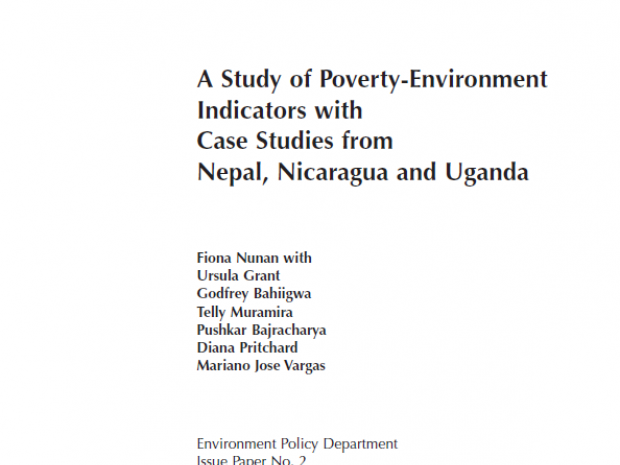Poverty and the Environment: Measuring the links (DFID, 2002)

There have been numerous initiatives to develop indicators that track trends and developments in the state of the environment, and indicators that reflect on human development, particularly comparing trends between countries as well as over time. But human development and environmental issues have generally been looked at separately, and there is a need to develop indicators that reflect the relationships between them, particularly focusing on poverty and environment. This has been highlighted in the recent initiative of the World Bank/International Monetary Fund to promote the development of Poverty Reduction Strategy Papers (PRSPs) setting out the poverty profile of a country and key initiatives that will contribute towards poverty reduction. Many of the country PRSPs produced to date have not sufficiently considered environmental issues or recognised the linkages between poverty and the environment (SDU, 2000). Subsequently, associated poverty–environment indicators have not been generated.
This report sets out the key findings of a study conducted between September 2000 and April 2001 to develop and pilot test a set of generic poverty–environment indicators for potential use in PRSPs. The indicators were developed through a review of environmental issues of relevance to the poor, particularly drawing on findings from participatory poverty assessments. The draft indicators were then pilot tested in three countries: Uganda, Nepal and Nicaragua. These countries were selected as they either have produced – or are in the process of producing – a PRSP, and because they represent different geographical regions and conditions.
This document is the sole property of the DFID and it is made available on this site in the only aim of knowledge sharing.
You can find more information on: https://www.gov.uk/government/organisations/department-for-international-development
Log in with your EU Login account to post or comment on the platform.